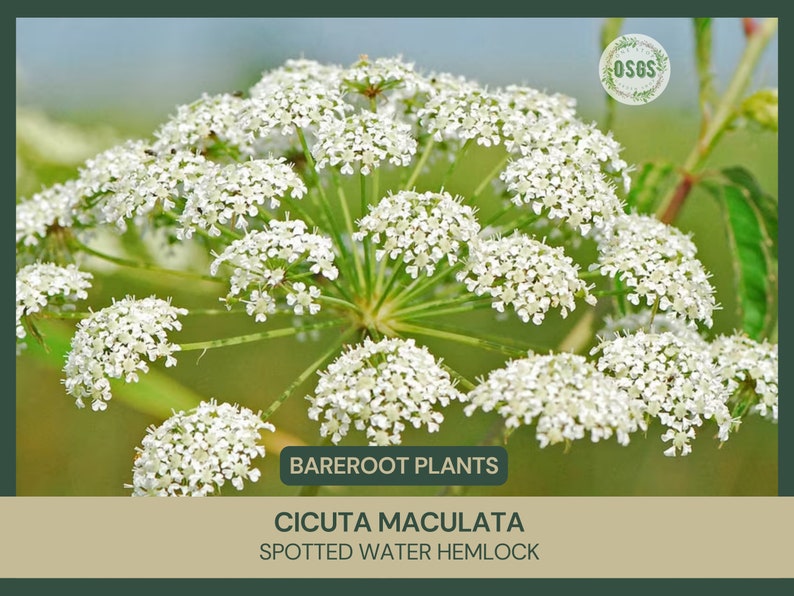
Cicuta maculata
Common name: Spotted Water Hemlock
Understanding and Growing Cicuta Maculata: A Guide for Gardeners
Cicuta maculata, widely known as Water Hemlock or Spotted Cowbane, is a native perennial known for its striking white flowers and affinity for wet habitats. It's important to note that this plant is highly toxic, so handle with care.
Recognized for its umbrella-like clusters of small, white flowers.
Thrives in wetlands, along streams, and in moist, low-lying areas.
Due to its toxicity, it's crucial to handle with care and consider its placement in gardens carefully.
Plant Care
Careful attention is required when growing Water Hemlock due to its toxic nature.
Sunlight: This plant flourishes in full sun but can also adapt well to partial shade, making it suitable for various garden locations.
Soil: It shows optimal growth in wet, marshy conditions, ideal for water gardens or damp areas.
Watering: Consistently moist or wet soil is crucial for its health, reflecting its natural marshy habitat.
Spacing: When planting, allow a generous space of about 24-30 inches between each plant to accommodate its growth and spread.
Planting and Propagation
Due to its toxic nature, consider carefully whether to plant or propagate Cicuta maculata in areas accessible to children or pets.
Plant in early spring or fall.
Propagation is typically done by seed or by dividing the roots.
Use gloves and take precautions when handling seeds or plant material.
Pests and Diseases
Water Hemlock is generally resistant to pests and diseases but monitor for common issues in wetland plants.
Keep an eye out for rust and fungal diseases common in wet conditions.
Aphids and other soft-bodied insects can occasionally be a problem.
Ensure good air circulation and avoid overly dense planting.
Feeding and Fertilizing
Water Hemlock does not require extensive feeding or fertilizing.
Fertilization is generally not needed, especially if planted in rich, wet soil.
If growth is poor, a light application of a balanced fertilizer in the spring can be beneficial.
Over-fertilization can lead to excessive, weak growth.
Seasonal Care
Seasonal care adjustments help maintain the health of your Water Hemlock.
Foliage typically dies back in the winter.
Cut back dead foliage in late fall or early spring.
In winter, the plant may benefit from a protective layer of mulch in colder regions.
Plant Uses
Due to its toxic properties, Cicuta maculata is usually not recommended for general garden use but has ecological benefits.
Can be used in naturalized wetland areas to support local ecology.
Attracts pollinators such as bees and butterflies.
Not suitable for areas frequented by children and pets.
Varieties and Cultivars
Cicuta maculata is a distinct species, and there are no widely available cultivars.
Other non-toxic wetland plants can be considered as alternatives for garden use.

Growing Tips and Tricks
When growing Water Hemlock, safety should be the primary concern.
Always wear gloves and avoid touching your face when handling the plant.
Ensure it is planted away from areas where there's a risk of ingestion by humans or animals.
Consider planting it in contained, controlled environments such as fenced-off wetland areas.
Troubleshooting Common Problems
Be cautious when addressing issues with Water Hemlock due to its toxic nature.
Yellowing leaves may indicate too dry conditions; ensure consistent soil moisture.
Sparse flowering could be due to excessive shade.
Maintain proper spacing to prevent overcrowding and promote healthy growth.
Read our blogs for more gardening tips!




